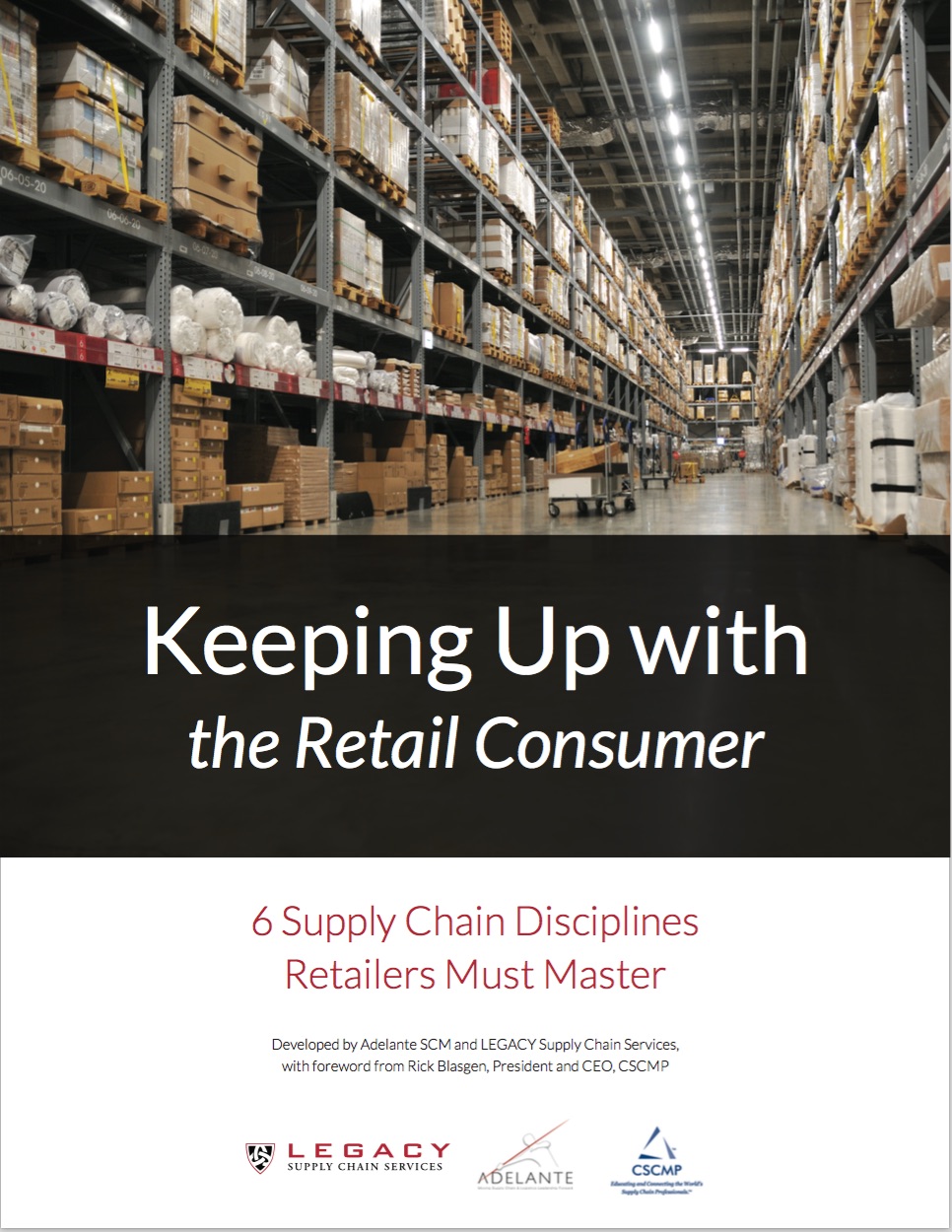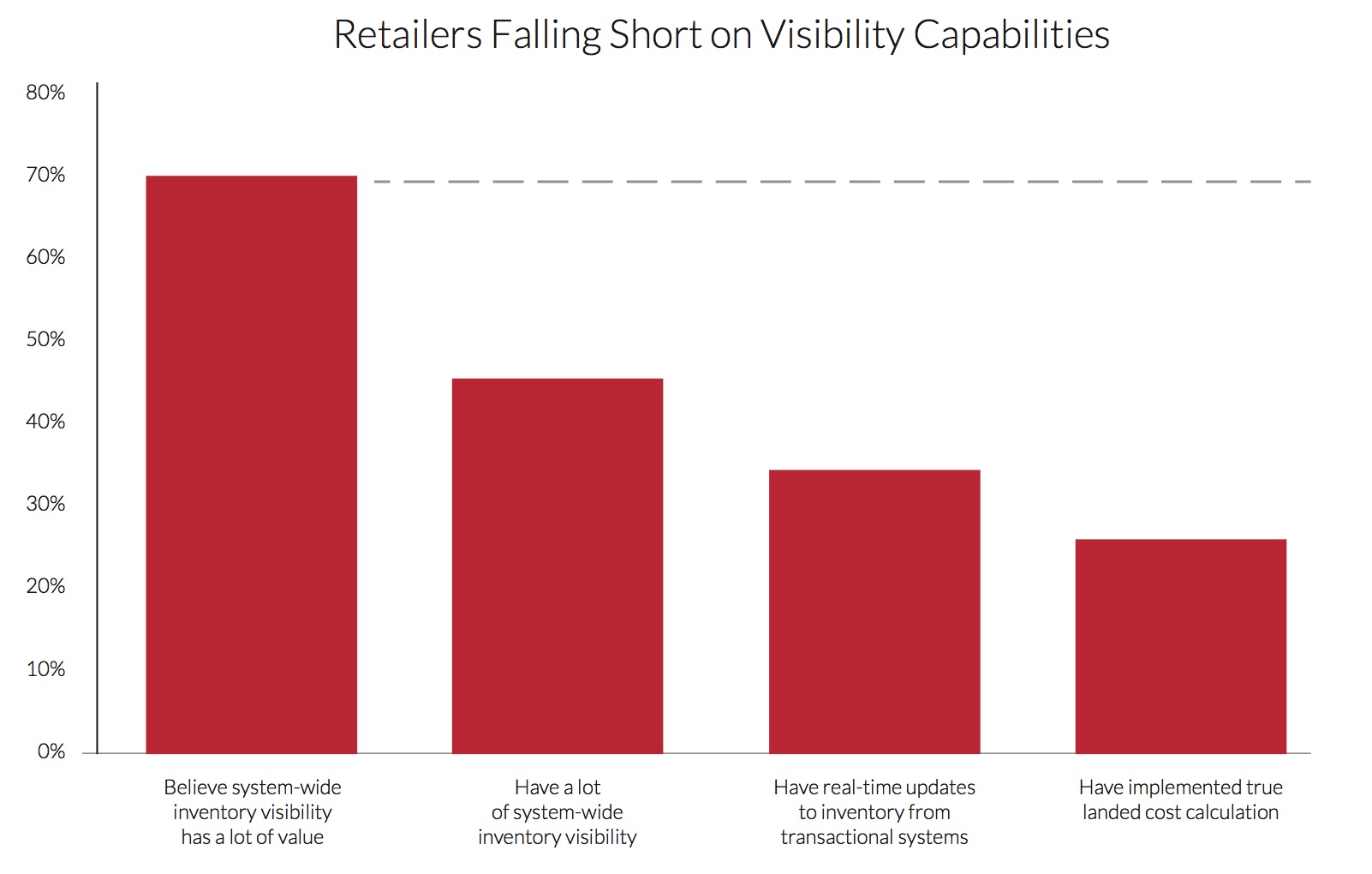In a conference call with investors in February 2015, Macy’s CFO Karen Hoguet summed up the primary objective of most retailers today: “We are making investments in growth, we want to accelerate growth, but it needs to be profitable growth.”
How can supply chain management enable profitable growth?
Getting to the answer requires retailers to take a broader, more strategic perspective of supply chain management, one that goes beyond defining supply chain excellence only in terms of cost reduction and control. More than ever before, excellence in supply chain management – especially in logistics functions – is about driving revenue growth, capturing market share, and enhancing customer satisfaction and loyalty.
For example, many retailers are using delivery as a competitive weapon. In a market where consumers can find the same product for about the same price from multiple retailers, the ability to offer consumers less expensive (usually free), faster (trending toward same-day), and more flexible delivery options (such as deliver to store or locker) is what wins the retailer the sale and customer.
 Supply chain management spans many functions and processes, including demand planning, sourcing, merchandising, supplier relationship management, inventory management, inbound and outbound transportation, distribution management, and store operations. There are plenty of books and papers detailing leading practices in each of these functions, but ultimately, it’s the alignment and synchronization of all these functions and processes that lead to supply chain excellence.
Supply chain management spans many functions and processes, including demand planning, sourcing, merchandising, supplier relationship management, inventory management, inbound and outbound transportation, distribution management, and store operations. There are plenty of books and papers detailing leading practices in each of these functions, but ultimately, it’s the alignment and synchronization of all these functions and processes that lead to supply chain excellence.
Rather than dive into the details of every end-to-end supply chain process – which are continuously evolving in response to changes in customer requirements, the competitive landscape, technologies, regulations, and other factors – let us focus instead on six fundamental supply chain disciplines that enable or influence virtually all supply chain functions and processes: Supply Chain Visibility, Supply Chain Mapping & Visualization, Supply Chain Risk Management, Supply Chain Design, Supply Chain Business Intelligence, and Talent Retention & Workplace Culture Development.
Put differently, if companies do not strive to master these six disciplines, their ability to innovate and drive continuous improvement across their supply chains will be hindered, and so will their pursuit of profitable growth.
 In a new ebook developed by Adelante SCM and LEGACY Supply Chain Services — Keeping Up with the Retail Consumer: 6 Supply Chain Disciplines Retailers Must Master — we highlight the various trends that are transforming the retail industry — such as e-commerce, omni-channel fulfillment, third party warehouse services, global sourcing and selling, importing and exporting challenges, the risks and challenges associated with international transportation, and other factors — and we provide a brief overview of the six fundamental supply chain disciplines and why they are important.
In a new ebook developed by Adelante SCM and LEGACY Supply Chain Services — Keeping Up with the Retail Consumer: 6 Supply Chain Disciplines Retailers Must Master — we highlight the various trends that are transforming the retail industry — such as e-commerce, omni-channel fulfillment, third party warehouse services, global sourcing and selling, importing and exporting challenges, the risks and challenges associated with international transportation, and other factors — and we provide a brief overview of the six fundamental supply chain disciplines and why they are important.
It’s important to note that while this research focused on the retail industry, the six fundamental disciplines outlined in the book, and the recommendations we make, apply to companies across all industries that want to enhance and leverage their supply chain capabilities to drive profitable growth.
Below is an excerpt from the section on Supply Chain Visibility. I encourage you to download and read the book for all the details, as well as use the online grader tool to assess your current capabilities in these areas. Then post a comment and share your perspective on the six disciplines and how supply chain management can help retailers and other companies achieve profitable growth moving forward.
—
Supply Chain Visibility
There are many ways to define Supply Chain Visibility, but here’s a simple definition: Having timely, accurate, and complete data and information related to orders, shipments, inventory, sales, costs, assets, and other supply chain related items.
Supply Chain Visibility enables companies to quickly and confidently answer the most common supply chain questions that arise every day: What’s the status of my order? Where’s my shipment or truck? How much inventory do we have across our network? Are products selling faster or slower than forecasted? What’s the total cost to serve?
Supply Chain Visibility also helps companies to analyze more strategic questions, such as “If we flowed products differently across our network, what impact would it have on costs and lead time?”
Unfortunately, achieving timely, accurate, and complete supply chain visibility remains an elusive goal for many companies. There are many reasons why:
- Supply chain data is stored in too many systems, in too many formats, across many companies and geographies.
- A lot of data/information is communicated in batch and serial mode, sometimes hours or days after a transaction or event occurs.
- Low-tech / no-tech processes still exist, especially in developing countries.
- Supply chain networks are reconfiguring at a rapid pace, so the challenge of connecting to new trading partners is ongoing.
- Nobody really owns or is accountable for supply chain visibility and data quality management.
In a survey of retailers conducted by RSR Research in May 2014, 72 percent ranked “system-wide inventory visibility” as having a lot of value (up from 45 percent in 2012), but only 47 percent reported having “a lot of visibility” in that area, virtually the same percentage as in 2012. In addition, only 34 percent of the retailers reported having “real-time updates to inventory from transactional systems” and only 31 percent said they have implemented “true landed cost calculation.”

Simply put, Supply Chain Visibility is the water and oxygen of supply chain management. Just like human life can’t exist without water and oxygen, neither can supply chain excellence without timely, accurate, and complete Supply Chain Visibility.










